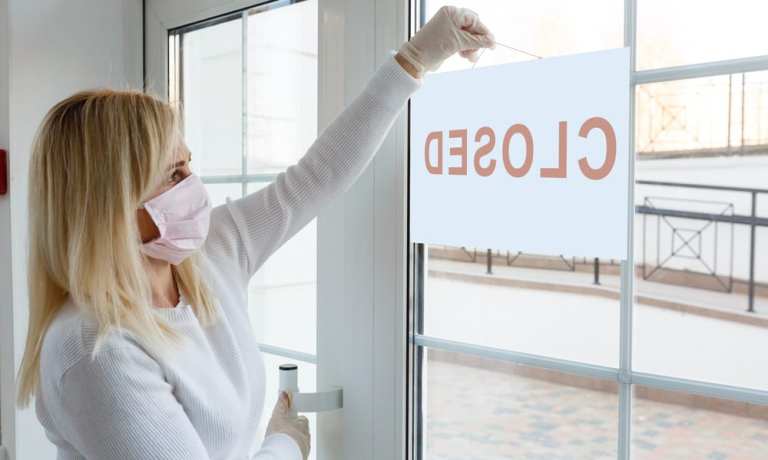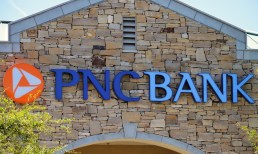Friday, April 3 was the day everyone expected would bring a sigh of relief — and offer much-needed hope — to the 30 million SMBs that employ roughly half of the U.S. workforce, and whose businesses had been hard hit by the #stayathome requirements of the COVID-19 pandemic.
That was the day the SBA PPP rescue relief effort began accepting applications from banks on behalf of their small business customers. Many of those SMBs had already begun working with their commercial bankers to prepare for that go-live day immediately after the $2.1 trillion CARES Act had passed a week earlier, on March 26.
Unfortunately, it didn’t do much to change how those SMBs felt about their chances of surviving the economic impact of the pandemic.
In fact, it didn’t move the needle at all.
PYMNTS has studied more than 700 SMBs since March 24 to understand the impact of the pandemic on their operations, the stability of their businesses, their access to cash and working capital, and their efforts to slow their cash burn and pivot their approach if possible.
The focus of our research is on Main Street SMBs, the mix of establishments that define the social, cultural and economic character of our country’s cities and towns. This mix of SMBs includes retailers, restaurants, professional and personal services firms, contractors, manufacturers, wholesalers and tech firms. They range from operating in small towns to large cities. The average firm had 28 employees and revenue of $1.5 million. We go into the market every 10 days to see what has changed, quite literally, week to week.
Advertisement: Scroll to Continue
On March 24, two days prior to the passage of the CARES Act, we asked Main Street SMBs to assess the likelihood that their businesses would survive the economic crisis created by COVID-19. Ten days later, on April 6, we asked the same questions once again.
On March 24, knowing that government help was on the way, but not certain of the specifics, one in four Main Street SMBs didn’t think their businesses would survive the pandemic, and four in 10 said they weren’t sure.
On April 6, days after the SBA PPP program had gone live and the details were known, one in four SMBs still didn’t think their businesses would survive the pandemic, and four in 10 still said they weren’t sure.
Those who thought their businesses would survive before the stimulus bill still think that way. Those who weren’t sure or were convinced their businesses wouldn’t survive still think that way, despite the promised help.
That’s despite the passage of a $2 trillion stimulus bill that gave those Main Street SMBs a $350 billion PPP lifeline to grab — and despite the fact that a third of the SMBs we studied had already applied for one.
This finding will shock many people, and quite possibly many policymakers who have worked very hard to create and pass a stimulus bill that will pump unprecedented levels of capital into the market – and, in theory, into the bank accounts of those Main Street businesses.
Yet it will shock absolutely no one who understands the economics of SMBs, and the reality of what it takes to run one.
Main Street SMB Economics 101
The business model of most Main Street SMBs is quite simple: Customers walk into their storefronts and buy stuff every day, book appointments to get their nails and hair done every day, work out at gyms and fitness studios every day, and hang out at bars and coffee shops or eat in their restaurants every day.
Daily foot traffic and sales are the oxygen of those businesses.
Contractors estimate and complete projects for businesses and for homeowners who want to remodel their homes or repair broken things in their homes or companies every day. Professional services companies and tech firms serve businesses and consumers who need their marketing or web or graphic design services, their bookkeeping, tax accounting and business services, their payments systems and processing services, their IT and communications systems services, their residential and commercial cleaning services, or their automobile repair services.
Healthy businesses and consumers who want and need access to those services are the oxygen of those businesses.
COVID-19 – quite ironically, given the nature of the virus – has robbed these establishments of their oxygen.
People can’t live five total minutes without oxygen.
Small businesses can’t survive weeks without demand.
In both cases, certain death is the result.
For these Main Street SMBs, there is no demand.
People can’t walk into stores or bars or restaurants or gyms or hair salons or spas anymore – they have all been closed since the middle of March, most everywhere.
Consumers, 60 percent of whom now report living nervously paycheck-to-paycheck in an economy that is literally shut down, with the ranks of the unemployed approaching 15 percent, have shut down their wallets to anything they don’t deem essential.
Even services considered essential may give consumers pause if they require interacting with anyone they don’t know, especially when it means letting them into their homes.
Projects that were on the books in January and February have been canceled or put on indefinite hold.
For these Main Street SMBs, there is no cash cushion.
Most Main Street establishments run on very thin margins. The notion that all Main Street SMBs are living large, pulling down double-digit margins and banking piles of cash at the end of each week, simply isn’t accurate.
Margins for restaurants and boutique brick-and-mortar retailers average between 3 percent and 5 percent of sales. Contractors’ margins average between 5 percent and 7 percent of sales. The typical hair or nail salon, on average, has a profit margin of 8 percent. These are averages, of course, and some establishments do much better and some do much worse based on their overhead and operating costs.
All of these businesses make most of their money serving customers in an offline world.
Like any business, most Main Street SMBs are quite accustomed to dealing with the short-term cash flow lumpiness associated with business cycles and seasonality, even bad weather, and the little blips that interfere with those daily sales or project bookings. Many of them can more or less predict when those blips will occur, and have planned for and/or have access to working capital in one form or another to smooth over those temporary lulls.
The operative word here is temporary.
COVID-19 shut down those Main Street businesses quite literally overnight – and those businesses have remained on lockdown for nearly one month.
Even before the lockdown, those businesses had started feeling the impact of consumers’ self-imposed social distancing weeks earlier.
Today, 44 of the 50 states have moderate to severe lockdown orders in place, and some 95 percent of the U.S. population is impacted.
The same Main Street businesses that were crushing it in January and February found themselves with zero sales, or pretty close to it. The 67 percent of Main Street SMBs who told us on March 24 that they expected their business performance to be the same or better in 2020 than in 2019 found their businesses nearly 100 percent supply and demand constrained.
All at once, and all at the same time.
Not surprisingly, most Main Street SMBs lack enough of a cash cushion to survive what they believe will be the duration of the pandemic, even if they get a PPP rescue relief grant.
Today, for most Main Street SMBs, there is no money to meet payroll or pay bills.
Seventy-one (71) percent of these SMBS have done the only thing they feel they can do when revenue goes to zero or near-zero overnight: reduce payroll (38 percent) and stop paying their bills (33 percent).
Only a third of the Main Street SMBs in our study think that PPP will provide relief for them.
Crossing the Main Street SMB Stimulus Cash Gap
There is a universal agreement that the CARES Act PPP rescue relief bill is a necessary step in financially shoring up the SMBs that were hobbled by a mandated government shutdown. There is also a universal appreciation for the herculean effort it took to assemble a stimulus program of this magnitude — and so quickly — and for the Fed to take the unprecedented steps it has taken to, in theory, flood SMBs with operating cash.
Yet the longer the government shutdowns remain in force, coupled with the uncertainty of what life after lockdown will look like for Main Street SMBs, many may decide to not bother applying for PPP funds. Or, if they do, they might not accept the funds that are offered.
An important provision of the PPP program is loan forgiveness. SMBs with fewer than 500 employees who apply can receive 2.5 times their W-2 payroll. They can have the loan forgiven if they keep their payroll constant over the next eight weeks — constant as defined in a world before COVID-forced layoffs or furloughs. The intention of the PPP relief package is to have SMBs keep or rehire their workforce, and pay them, using government funds for the next 2.5 months.
For the many SMBs that have already been without sales over the last month and have already furloughed or laid off much or most of their workforce, there is still too much of a cash gap chasm for them to cross before they believe their businesses will return to pre-COVID levels, even with the benefit of PPP funds. There is also great uncertainty about when PPP funds will arrive.
On average, the Main Street SMBs we studied report a cash gap of roughly four months. One hundred and thirteen (113) days is the gap that most of these businesses project between the time they say they will run out of cash and when the pandemic is expected to end, at which point their businesses can resume normal operations.
With the two months of PPP funds, these Main Street SMBs still count a cash gap of roughly two months — some 53 days.
These cash gaps, even with access to PPP funds, vary by industry.
Doing the Main Street SMB Mathematics
Unfortunately, no one really knows when the economy will return to business as usual— and what business as usual will even mean on the other side of the pandemic.
On April 6, most Main Street SMBs were operating under the impression that restrictions would lift in the early part of May.
A week later, discussions are circulating that the lockdown may leak into the end of May and possibly early June. Infectious disease expert Dr. Anthony Fauci told MSNBC’s Brian Williams on April 10 that he hopes the U.S. will be able to return to normal in November.
November is 8.5 months away.
All of this uncertainty figures into what the 60 percent of Main Street SMBs that are either convinced their businesses won’t make it — or are unsure whether they will make it — are doing right now about their businesses.
It also figures into whether PPP funds will help them hang on — or whether they’ll just kick the inevitable potential for business failure and employee layoffs down the road for 2.5 months.
Restaurant and bar operators wonder if life after lockdown will mean bars and restaurants can accommodate customers at their pre-COVID-19 capacities — or if, as part of reopening parameters, they’ll be forced to operate at 50 percent or 60 percent less capacity for an unknown period of time.
Main Street retailers have the same concerns.
Even when restrictions are lifted, all Main Street SMBs worry that it might take a long time before consumers feel comfortable going into stores, restaurants, bars, gyms, nail salons or spas the way they once did. Seventy-one (71) percent of consumers say it will take the availability of a vaccine before they can feel comfortable resuming their normal activities.
They worry that the digital habits many of their once-loyal customers have been forced to adopt across all of their daily activities will become their new routines, and that they’ll never return — or won’t use their services the way they once did.
These Main Street SMBs wonder, too, whether consumers, many of whom may be facing unemployment or are already unemployed, will still have the discretionary income to spend. And even if they do, whether they will feel comfortable spending until they feel confident the economy is on sure footing.
Not knowing the answers to any of these questions, but knowing that taking PPP funds means having to keep pre-COVID payroll intact, may mean that small businesses will decide not to take any money at all.
In fact, many of the Main Street SMB business owners I have spoken with don’t want to make the commitment to maintain their payroll or have to repay a loan — unsure of when and whether demand will warrant staffing up to meet their pre-COVID supply.
With all of those considerations, here’s what the math looks like for Main Street USA.
Based on the length of time the COVID-19 pandemic is expected to last and the cash that is currently available to Main Street SMBs, 83 percent of them expect to run out of cash before they can reopen their businesses and make sales without any government assistance.
Even with PPP funds, nearly half — 47 percent — believe they will deplete their cash before demand comes back.
Restaurants, not surprisingly, are the hardest hit.
Survival of the Main Street SMB Fittest
Five days after PPP was officially accepting applications — and a week after it was known that help was on the way — roughly 25 percent of the Main Street SMB retailers in our sample had applied. And 35 percent of contractors, 41 percent of Main Street manufacturing companies, 30 percent of personal and professional services firms and 50 percent of restaurants had applied to receive PPP funds.
Thirty-nine (39) percent of those Main Street SMBs who characterize their businesses as highly unstable applied for PPP funds. For the 47 percent of Main Street SMB retailers, 38 percent of SMB contractors, 40 percent of Main Street professional and personal services firms, and 100 percent of tech and manufacturing firms who characterize their businesses as unstable — and whose annual sales are $250,000 or less, and who have applied for PPP funds — it is very likely that PPP is much too little, and much too late.
The question, then, becomes which of the 42 percent of Main Street SMBs that characterize their businesses as stable enough to weather the COVID storm, and which the 32 percent aren’t sure. Only 25 percent and 36 percent of those Main Street SMBs in our sample, respectively, got in line for PPP funds as of April 6.
Maybe we’ll find in our next study that more stable businesses will have done the math and gotten in line to get a cash cushion to avoid layoffs and furloughs. And perhaps more of the unsure businesses will believe that taking PPP funds is enough to stabilize their business. We’ll let you know 10 days from now.
Now for my two cents.
Congress, and the Trump administration, need to rethink the terms of the PPP loan program, and do it quickly. SMBs should be given more flexibility on having the PPP loan forgiven so they can survive long enough, with as many workers as possible, until the economy returns to normal. The period for the loan forgiveness should be extended to as many months as the lockdown lasts, which now looks to be at least three months and possibly more.
Further, unless SMBs are given more funds, they should have the loans forgiven as long as they maintain the portion of the payroll that they can pay during the duration of the lockdown — so something like 50 percent of payroll, if the lockdown extends to four months, or something more flexible.
Even so, there will be carnage.
At the same time, we will need a parallel effort to encourage entrepreneurs to start new businesses to replace the ones that have made permanent exits, so we can quickly revive Main Streets across America. The time is now to think about government subsidies to keep Main Streets from becoming economic deserts.
Many have said that out of crisis comes opportunity. If that is true, Main Street SMBs need more economic opportunities — and right now — to make that sentiment more than just a media talking point.




